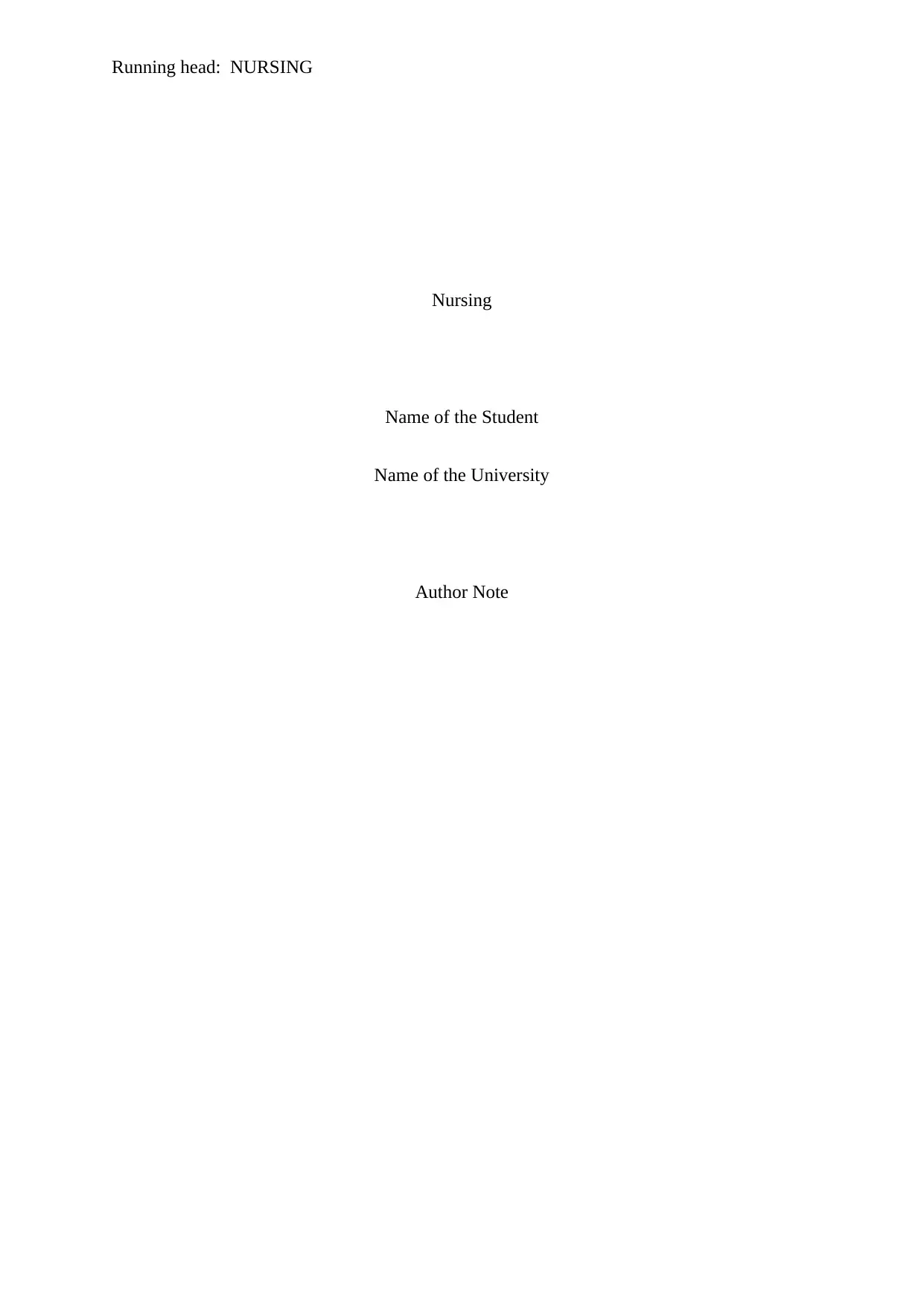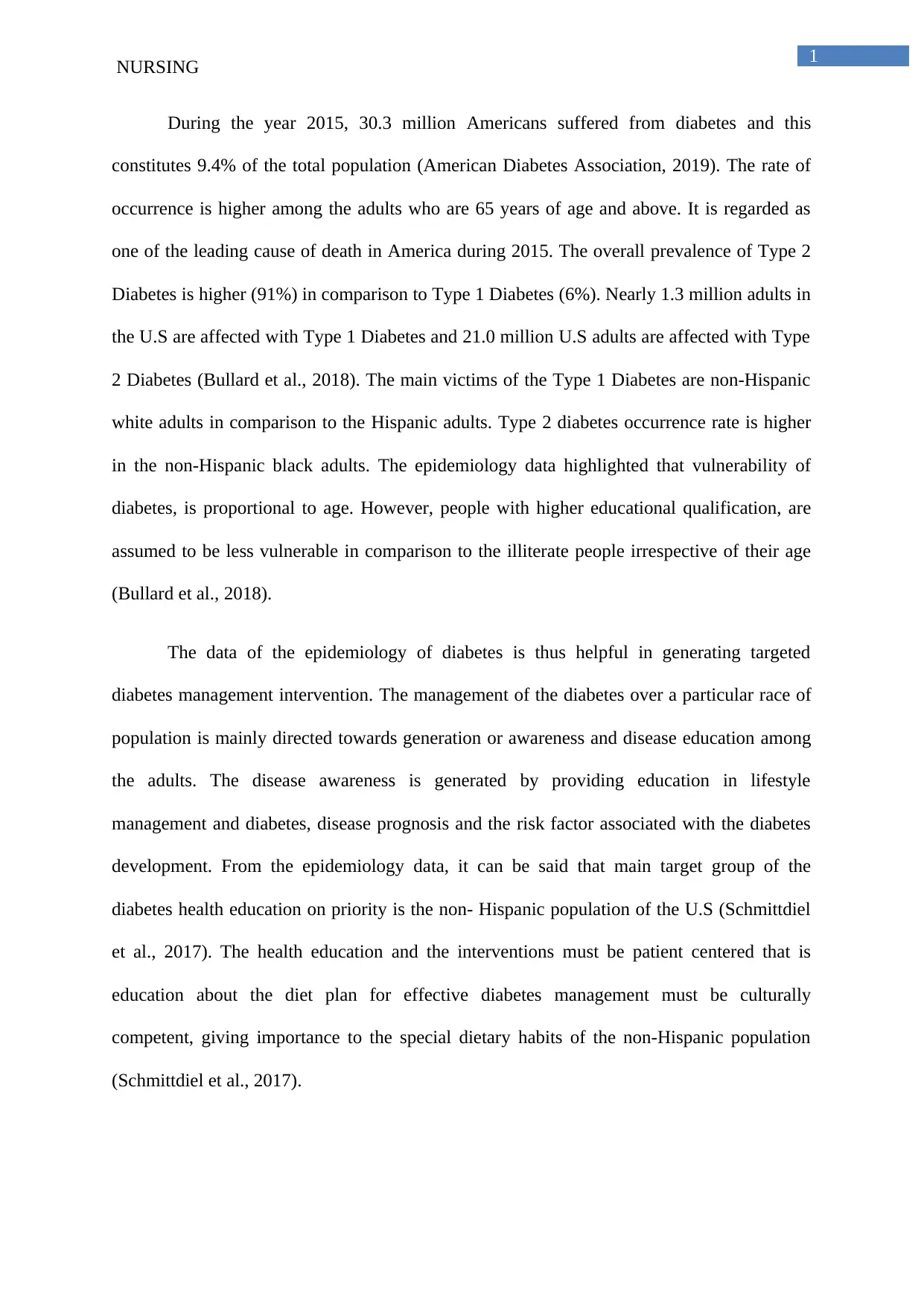Nursing Report: Diabetes Prevalence, Epidemiology, and Management
VerifiedAdded on 2023/04/26
|3
|516
|365
Report
AI Summary
This report provides an overview of diabetes, focusing on its prevalence, epidemiology, and management strategies. The report highlights the increasing prevalence of diabetes in the United States, with specific data on type 1 and type 2 diabetes, and the demographics most affected. It emphasizes the importance of understanding the epidemiology of diabetes to develop targeted management interventions, particularly for non-Hispanic populations. The report discusses the significance of health education, including lifestyle management and disease prognosis, to improve patient outcomes. References from the American Diabetes Association and other sources are included to support the information presented. The report underscores the need for culturally competent and patient-centered approaches to diabetes management, especially considering the dietary habits of different populations.
1 out of 3










![[object Object]](/_next/static/media/star-bottom.7253800d.svg)